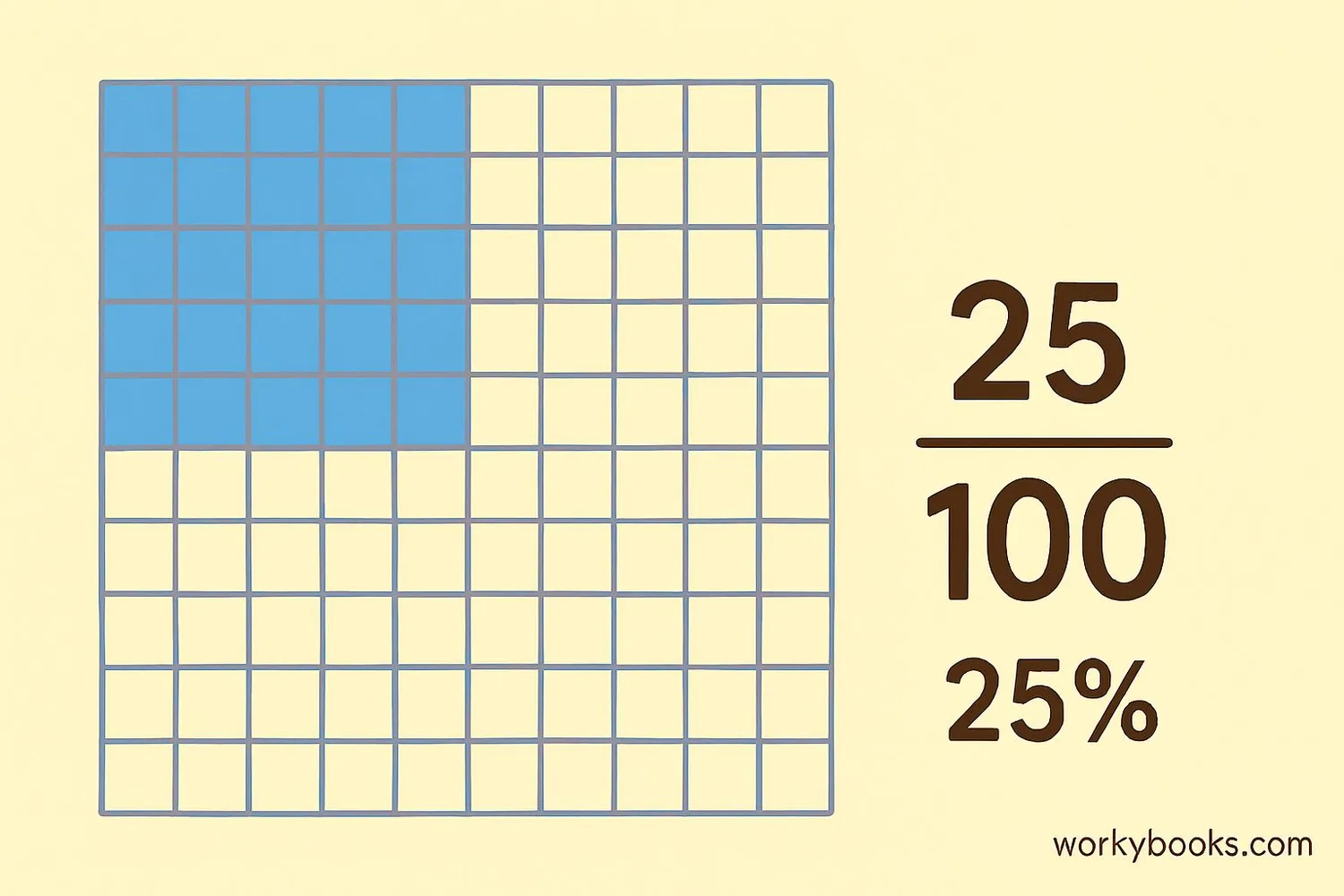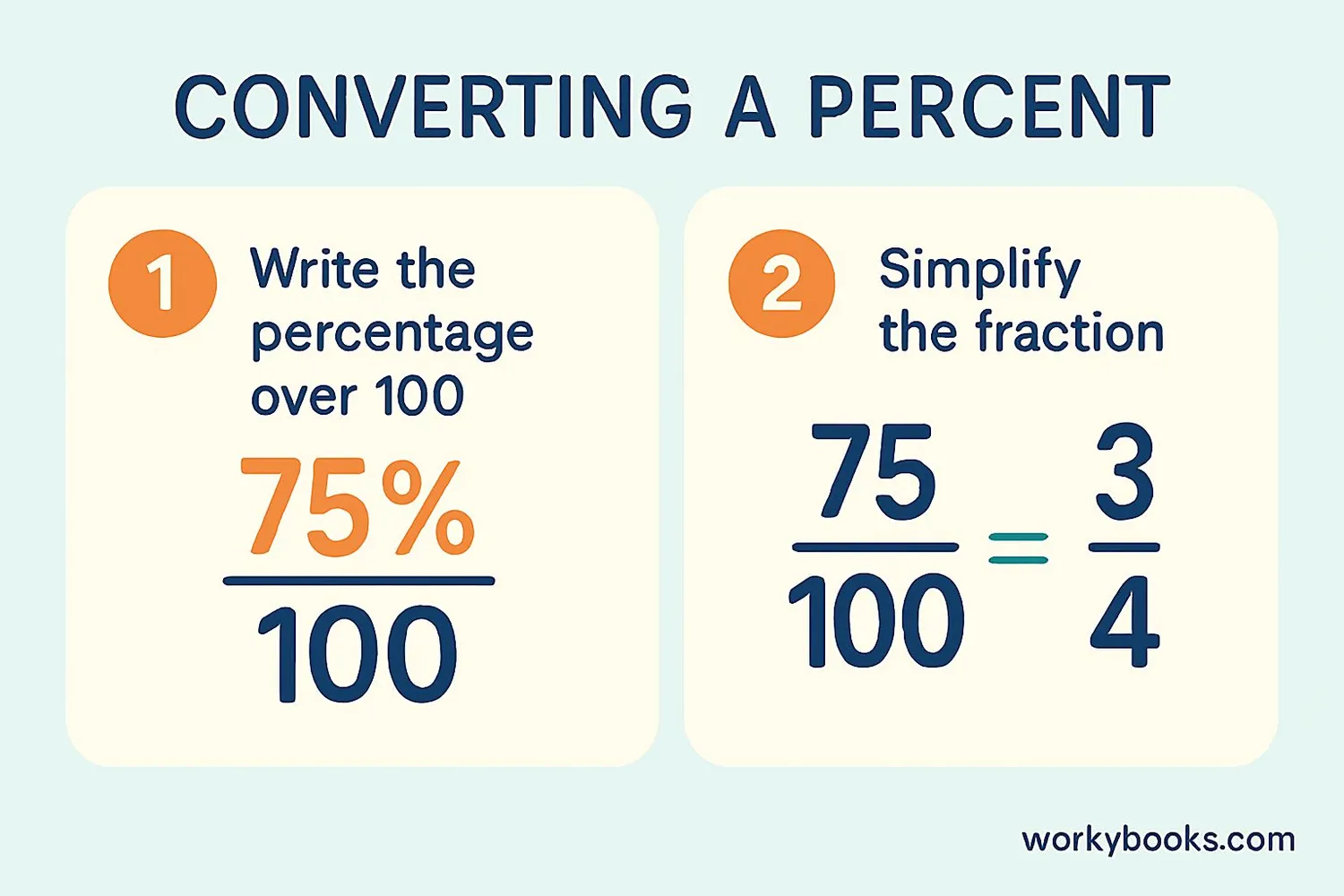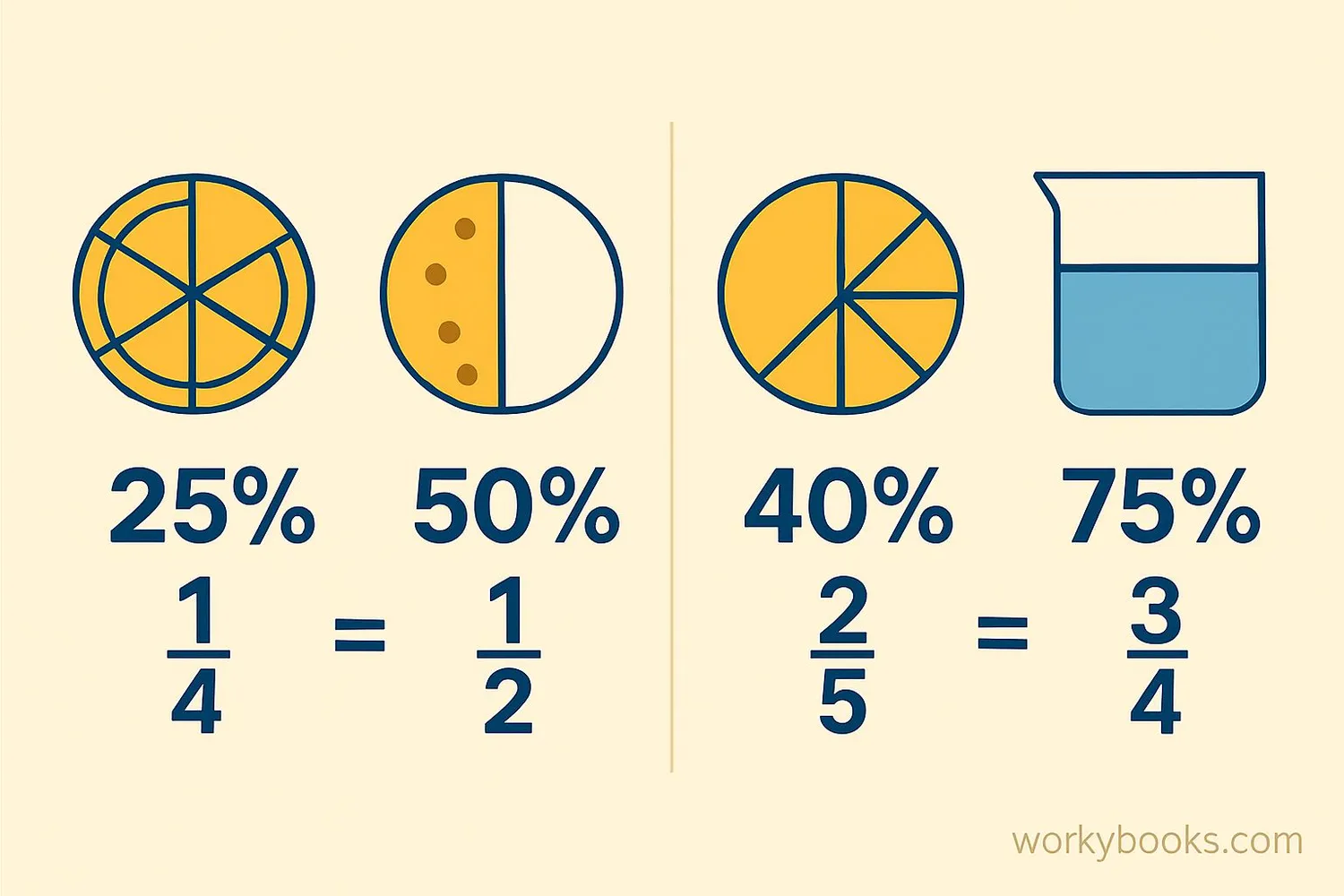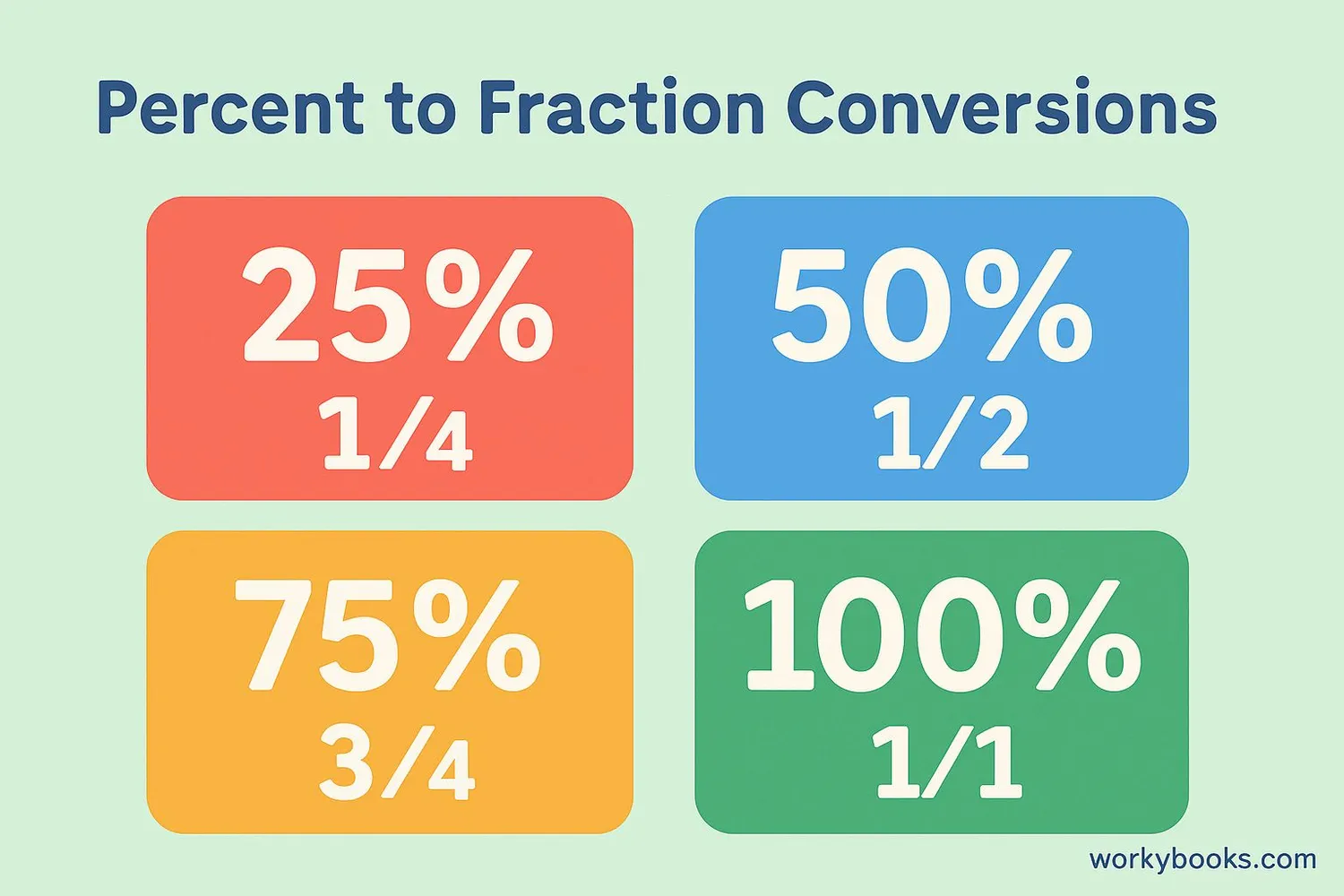Percent to Fraction Conversion - Definition, Examples, Quiz, FAQ, Trivia
Learn to convert percentages to fractions with easy explanations and practice activities
What is Percent?

Percent means "per hundred" or "out of 100". The word comes from the Latin "per centum". The percent symbol (%) is used to show how many parts out of 100 something represents.
For example:
25% means 25 out of 100 or 25/100
50% means 50 out of 100 or 50/100
100% means 100 out of 100 or 100/100
Since percentages represent parts out of 100, we can always write them as fractions with 100 as the denominator. Converting percentages to fractions helps us understand the relationship between numbers and work with them in different ways.
Key Concept
Percent means "out of 100", so any percentage can be written as a fraction with 100 as the denominator.
How to Convert Percent to Fraction

Converting percentages to fractions is simple! Just follow these steps:
Step 1: Write the percentage as a fraction over 100
For example, 75% becomes 75/100
Step 2: Simplify the fraction
Find the greatest common divisor (GCD) of the numerator and denominator and divide both by that number.
For 75/100, the GCD is 25: 75 ÷ 25 = 3, 100 ÷ 25 = 4, so 75% = 3/4
Conversion Formula
Then simplify the fraction by dividing numerator and denominator by their greatest common factor.
Special cases:
- If the percentage has a decimal (like 12.5%), write it as a fraction with 100 in the denominator: 12.5/100
- To eliminate the decimal, multiply numerator and denominator by 10: (12.5 × 10)/(100 × 10) = 125/1000
- Then simplify: 125/1000 = 1/8
Remember
Always simplify your fractions to their lowest terms! This makes them easier to work with and understand.
Examples

Let's practice with some examples:
Example 1: Convert 25% to a fraction
25% = 25/100
Simplify by dividing numerator and denominator by 25:
25 ÷ 25 = 1
100 ÷ 25 = 4
So 25% = 1/4
40% = 40/100
Simplify by dividing by 20:
40 ÷ 20 = 2
100 ÷ 20 = 5
So 40% = 2/5
8% = 8/100
Simplify by dividing by 4:
8 ÷ 4 = 2
100 ÷ 4 = 25
So 8% = 2/25
150% = 150/100
Simplify by dividing by 50:
150 ÷ 50 = 3
100 ÷ 50 = 2
So 150% = 3/2 (which is 1½)
Percent to Fraction Conversion Chart

This chart shows common percentages and their equivalent fractions. Use it to quickly reference conversions:
| Percent (%) | Fraction | Simplified Fraction |
|---|---|---|
| 1% | 1/100 | 1/100 |
| 5% | 5/100 | 1/20 |
| 10% | 10/100 | 1/10 |
| 20% | 20/100 | 1/5 |
| 25% | 25/100 | 1/4 |
| 30% | 30/100 | 3/10 |
| 40% | 40/100 | 2/5 |
| 50% | 50/100 | 1/2 |
| 60% | 60/100 | 3/5 |
| 75% | 75/100 | 3/4 |
| 80% | 80/100 | 4/5 |
| 100% | 100/100 | 1/1 |
Chart Tip
Notice how fractions with denominators that are factors of 100 (like 2, 4, 5, 10, 20, 25, 50) give us nice, simple fractions!
Conversion Practice Quiz
Test your percent to fraction conversion skills with this 5-question quiz. Choose the correct answer for each question.
Frequently Asked Questions
Here are answers to common questions about percent to fraction conversion:
Math Trivia
Discover interesting facts about percentages and fractions:
Origin of Percent
The percent symbol (%) evolved from the Italian term "per cento" meaning "for a hundred". The symbol first appeared in the 15th century as "pc" with a loop, which gradually became the % symbol we use today.
Percent in Nature
Did you know that about 71% of Earth's surface is covered by water? And the human body is approximately 60% water. Percentages help scientists describe our world!
Percent in Space
Astronomers use percentages to describe the composition of planets and stars. For example, about 91% of the Sun is hydrogen gas, while 8.9% is helium.
Fraction Records
The largest fraction with a one-digit numerator and denominator is 9/1 (which equals 900%). The smallest is 1/9 (about 11.11%). Fractions can represent any quantity, no matter how large or small!





